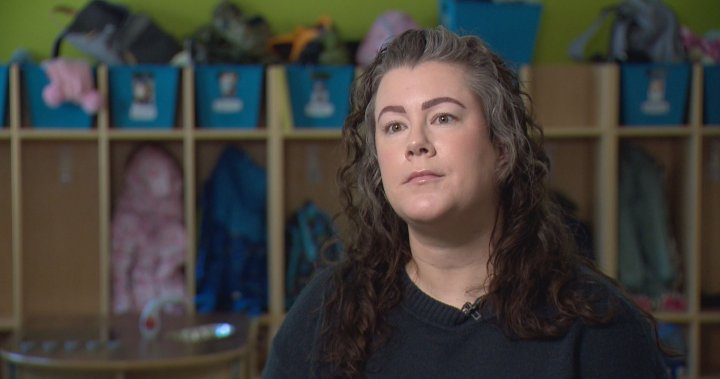Breanne Arnold’s nine-month-old daughter, Hadley, attends Prairie Lily’s Sacred Heart daycare, a facility that has warmly embraced Hadley’s diagnosis of deafness. The daycare’s staff, including a speech language pathologist, have undergone training to best support Hadley’s development, a proactive measure that has greatly relieved Arnold. This dedication to inclusivity and individualized care is emblematic of Prairie Lily’s commitment to fostering a nurturing environment for all children. However, this vital community resource is now facing a precarious future due to financial constraints, threatening the continuation of services for children like Hadley and jeopardizing the long-standing relationships the centre has cultivated with families over the years.
The current financial strain on Prairie Lily stems from a confluence of factors, primarily the implementation of the $10-a-day childcare program and a lack of consistent, sustainable funding. While the program aims to make childcare more affordable for families, its current structure has inadvertently created a funding disparity between established centres and newer facilities. New childcare centres entering the market have access to higher funding levels, allowing them to charge higher fees, while existing centres like Prairie Lily are stuck with lower, less sustainable funding levels. This imbalance places established centers at a significant disadvantage, forcing them to consider drastic measures such as program cuts and staff reductions to remain operational. Prairie Lily, along with other centres like Little Memories and Scott Infant and Toddler, are currently operating at a deficit, underscoring the widespread impact of this funding discrepancy.
The precarious financial situation facing Prairie Lily has raised serious concerns about the long-term viability of the centre and the services it provides. Executive Director Cara Steiner emphasizes the urgency of the situation, stressing the need for a long-term, sustainable funding model from the province. Steiner proposes a formula-based approach that ensures all childcare programs receive equitable funding, leveling the playing field and allowing both existing and new centres to thrive. This equitable distribution of resources would not only prevent closures of established centers like Prairie Lily but also ensure consistent quality care across all childcare facilities. The current funding structure, Steiner argues, is unsustainable and necessitates immediate action to avert significant changes in the childcare landscape.
The provincial government, acknowledging the need for a more equitable funding model, is reportedly working on a revised system. Sameema Haque, Assistant Deputy Minister of Education, confirms that efforts are underway to develop a new framework that addresses the existing disparities and ensures a fairer distribution of resources among childcare providers. However, the timeline for implementing this revised model remains unclear, adding to the anxiety of centres like Prairie Lily that are struggling to maintain operations in the interim. The delay in implementing a more sustainable funding solution exacerbates the financial pressures on existing childcare providers, pushing them closer to the brink of closure.
The potential closure of Prairie Lily carries significant implications, not only for the families currently enrolled but also for the wider community. Long waitlists at other childcare centres make finding alternative placements extremely difficult, particularly for families with infants and toddlers. Breanne Arnold highlights this challenge, noting that securing a spot in a quality daycare often requires joining waitlists during pregnancy. The closure of established centres would further exacerbate this shortage, leaving many families without access to affordable, high-quality childcare. The ripple effects of such closures extend beyond individual families, impacting the community’s ability to support working parents and ensure the healthy development of young children.
The situation at Prairie Lily highlights a critical juncture in the provision of childcare services. While the $10-a-day program aims to increase affordability and accessibility, its current implementation has unintentionally created an uneven playing field, jeopardizing the stability of existing childcare providers. The urgency of the situation demands swift action from the provincial government to implement a more sustainable and equitable funding model. This revised model must address the funding disparity between established and new centres, ensuring that all childcare providers have the resources necessary to operate effectively and provide quality care. Failure to act decisively could result in the closure of vital community resources like Prairie Lily, leaving families scrambling for childcare options and jeopardizing the well-being of children like Hadley, who rely on these centres for their development and care.

